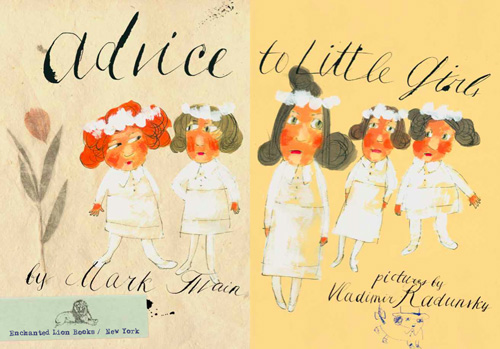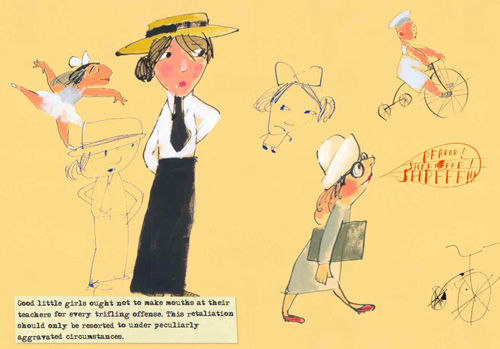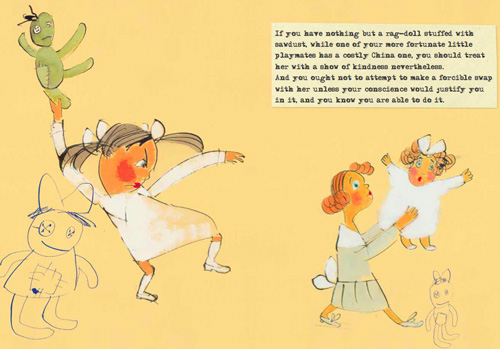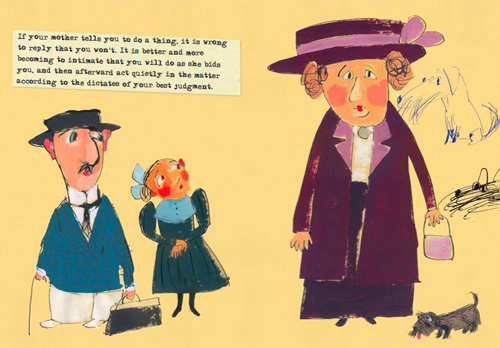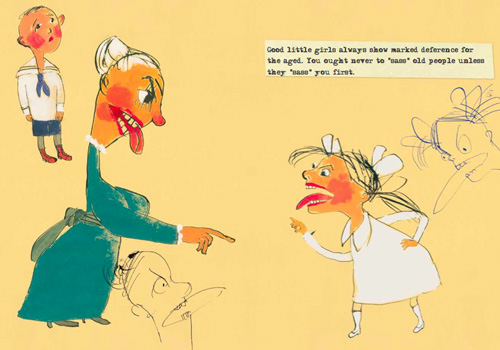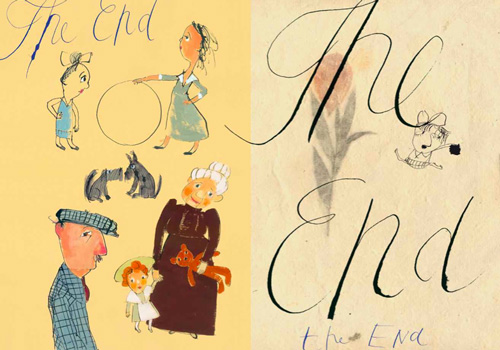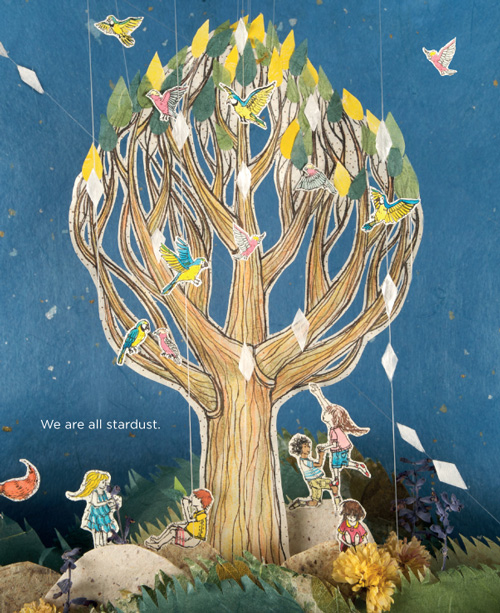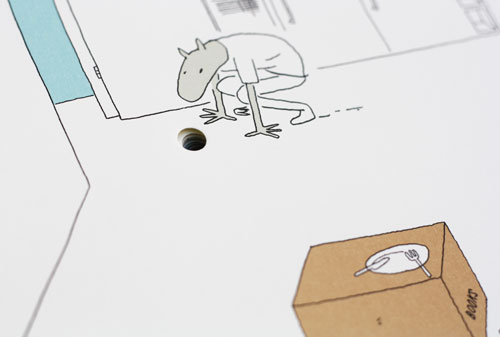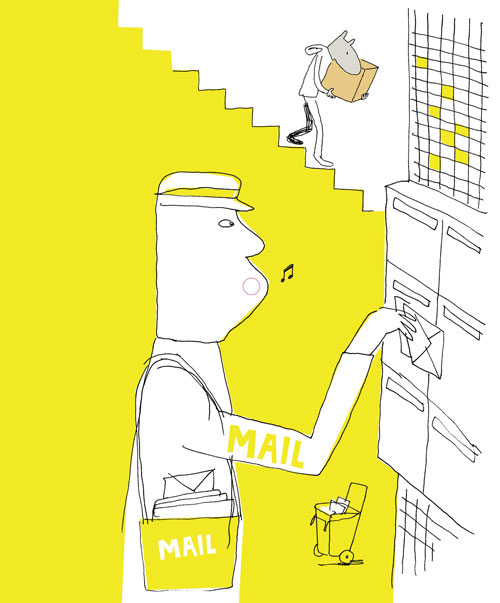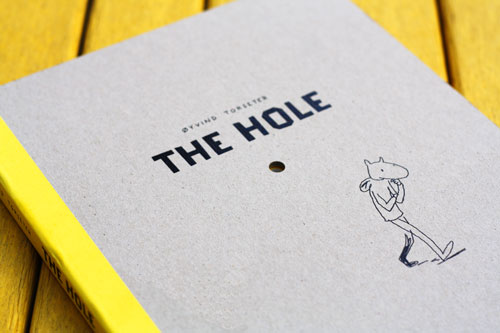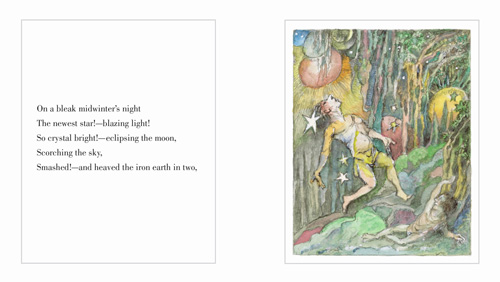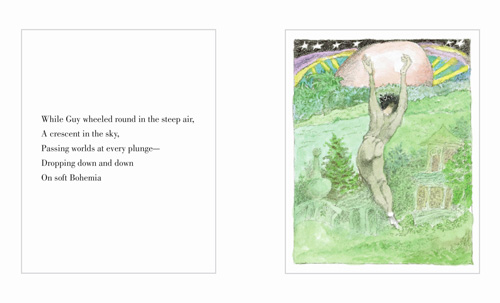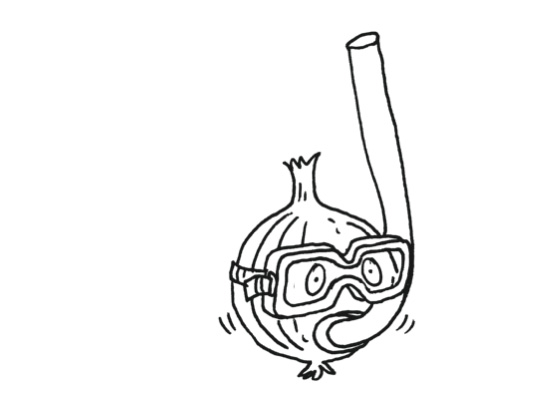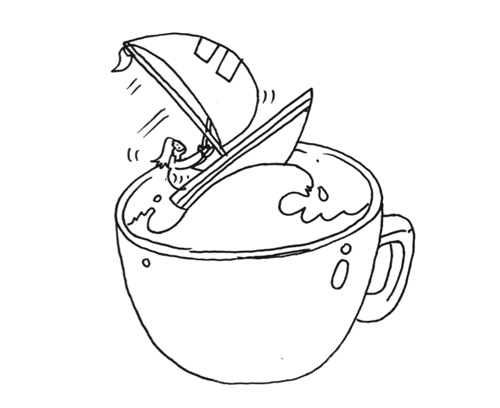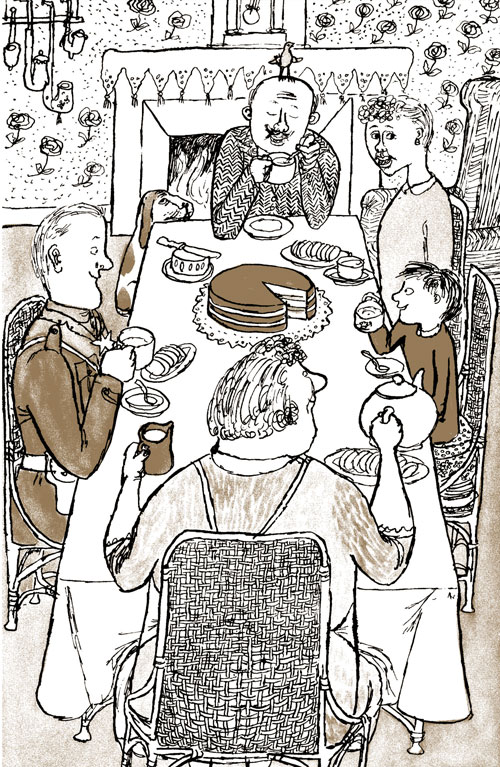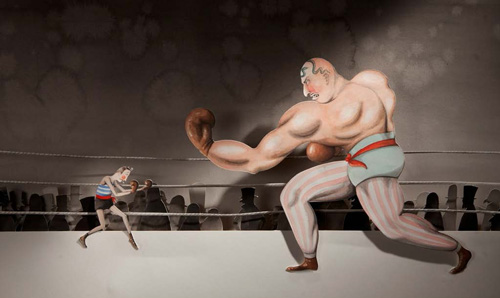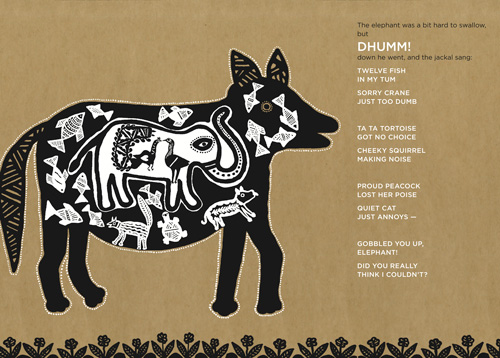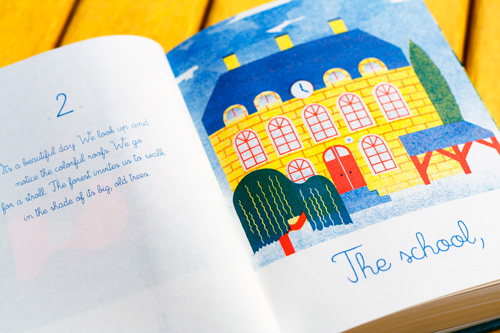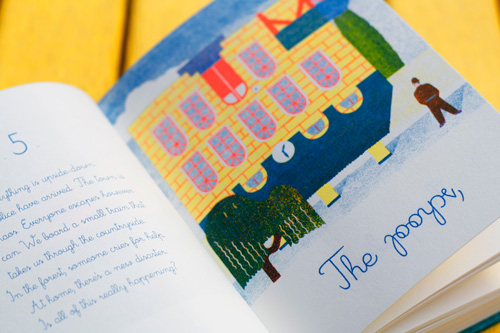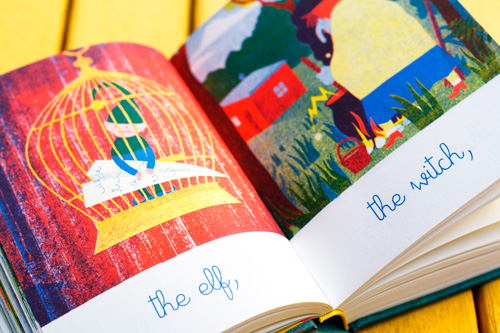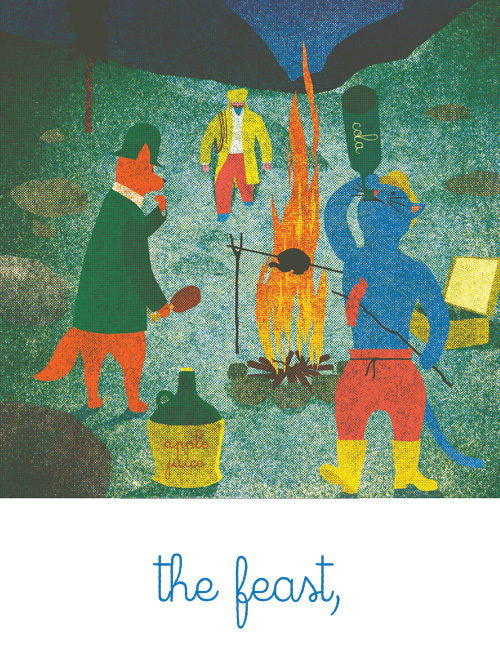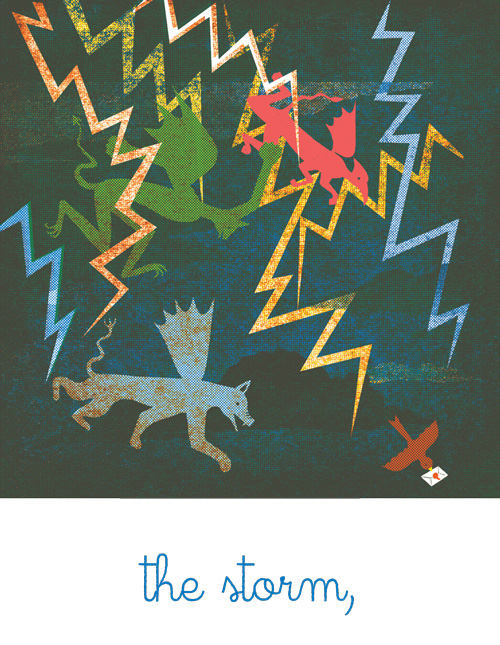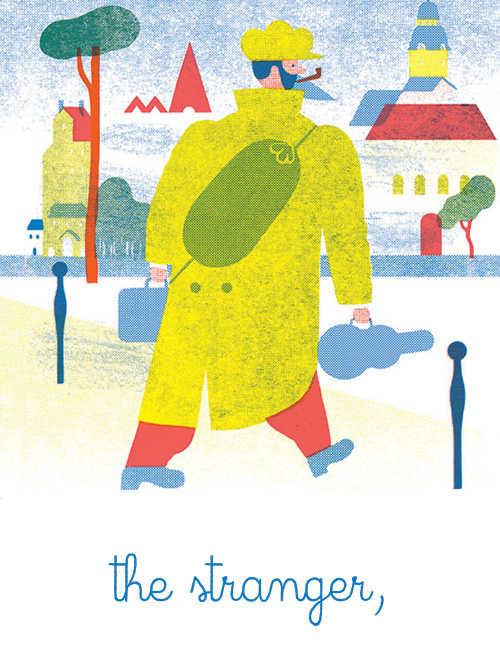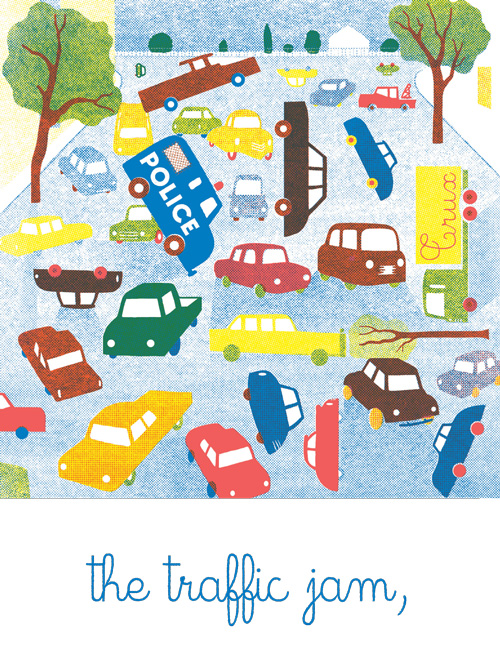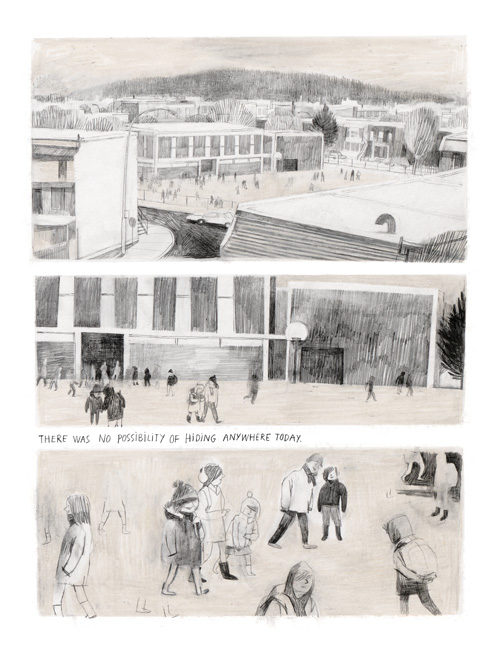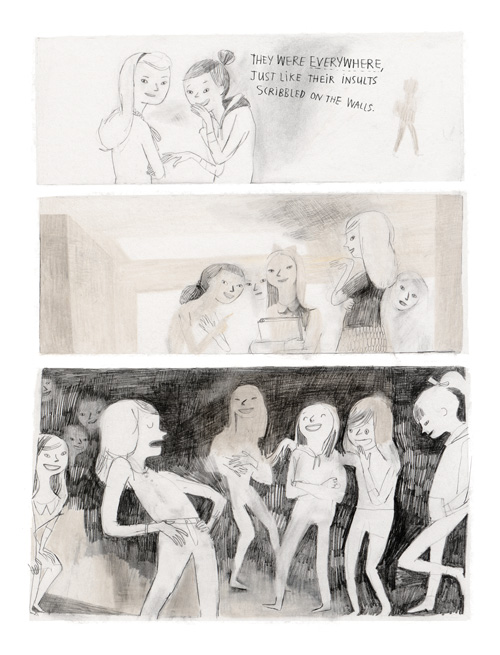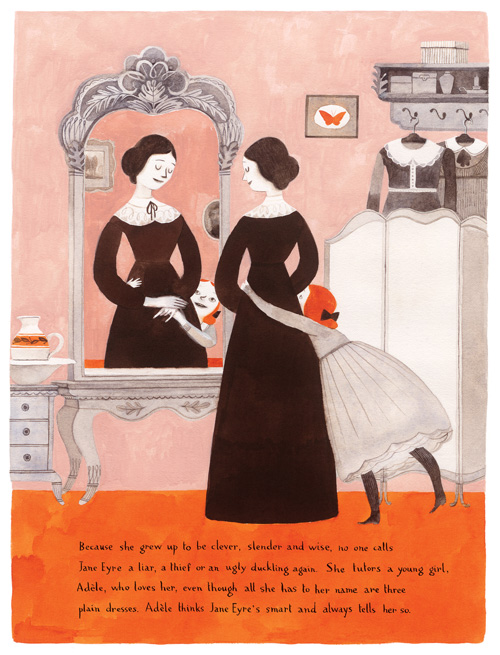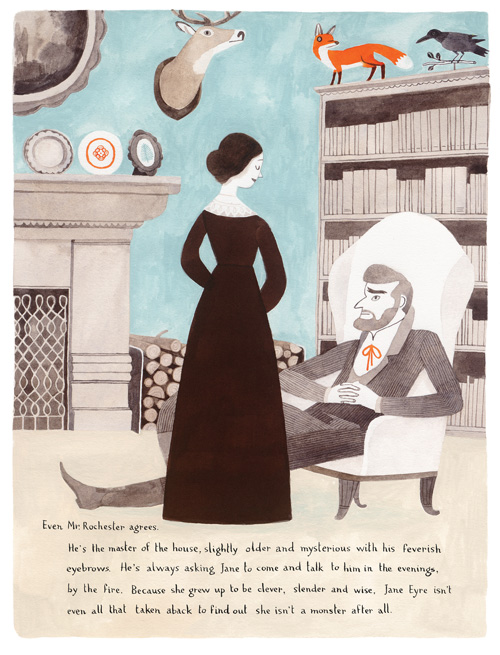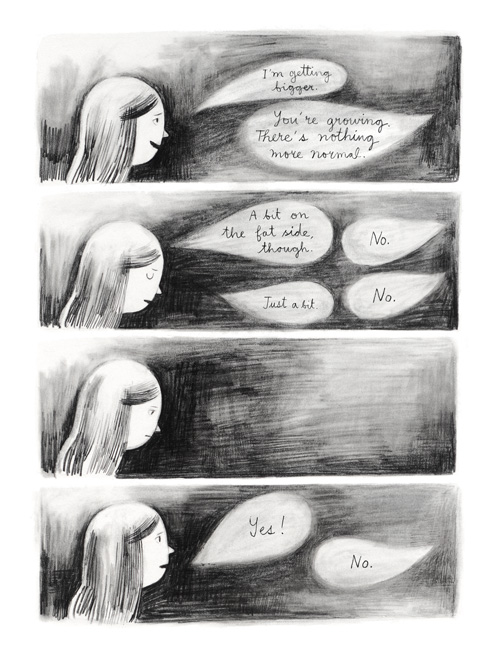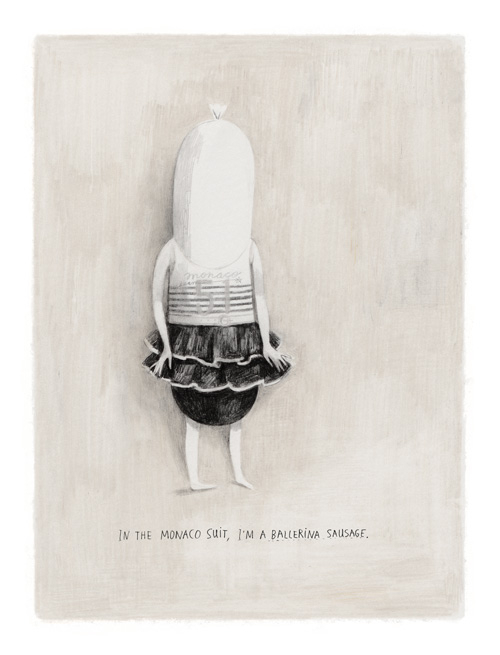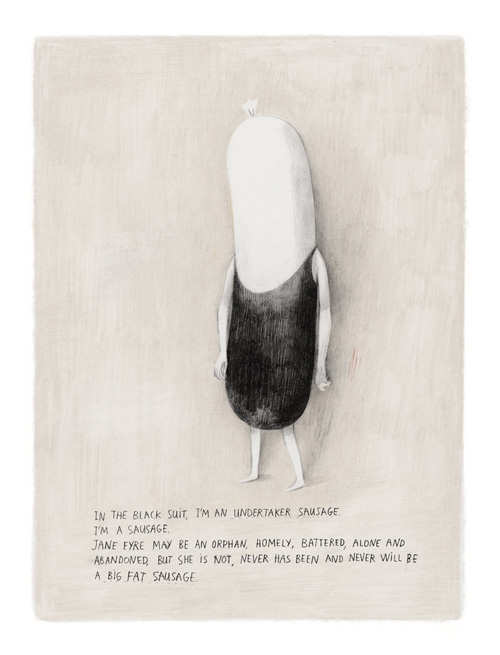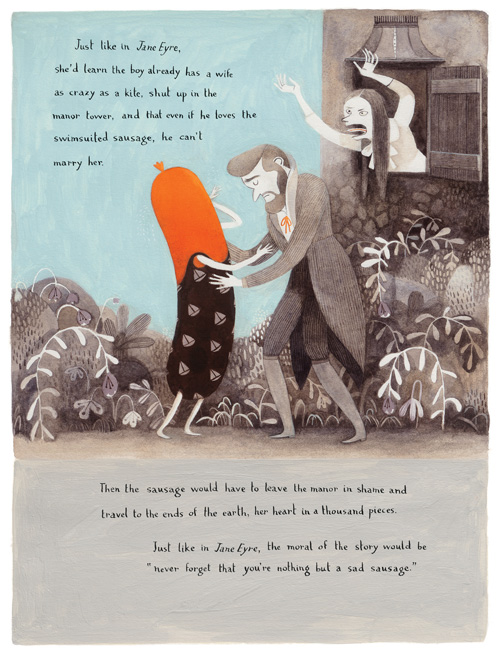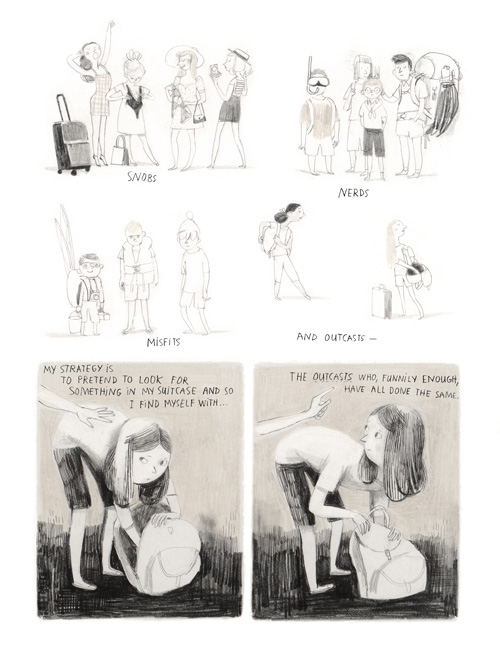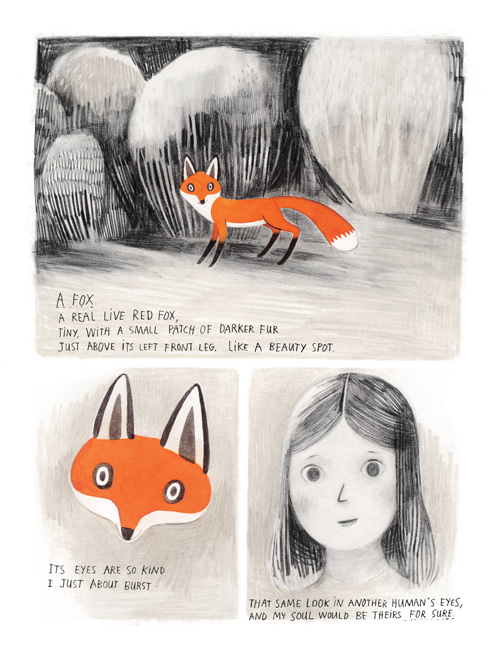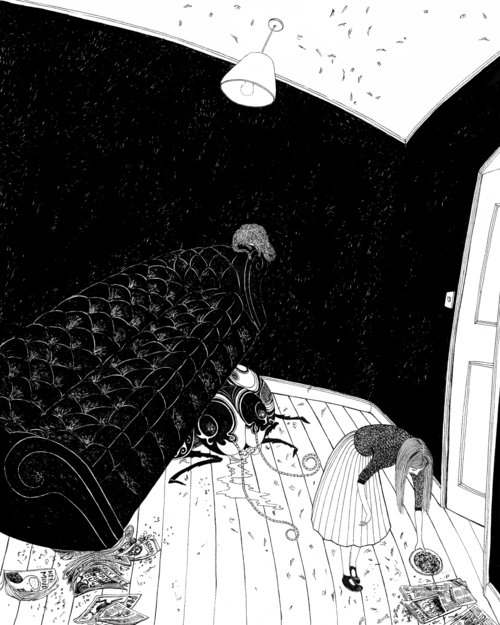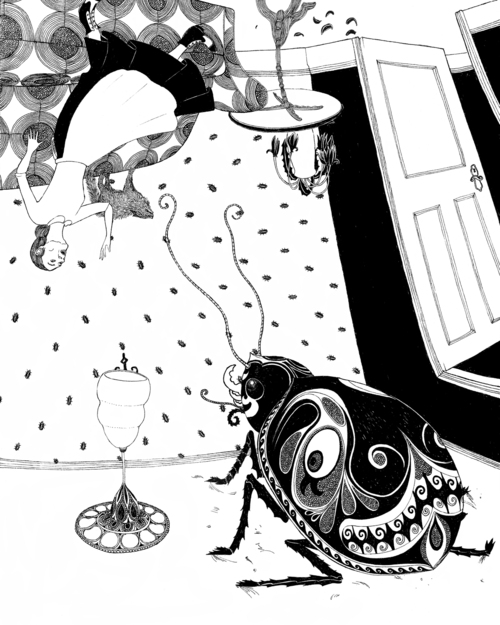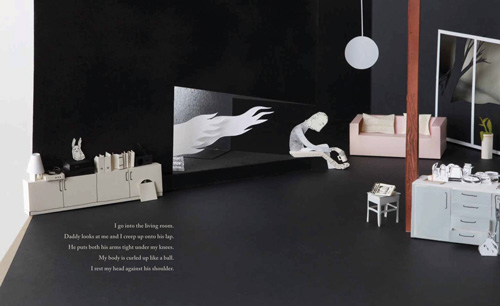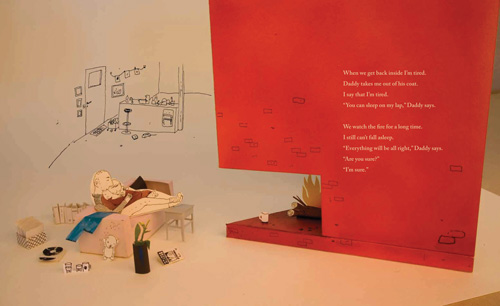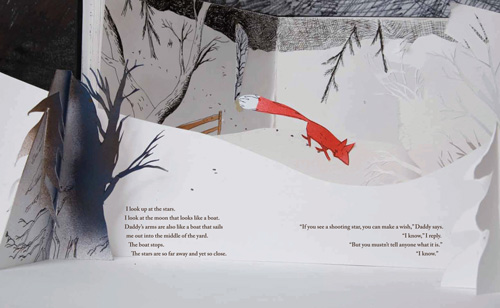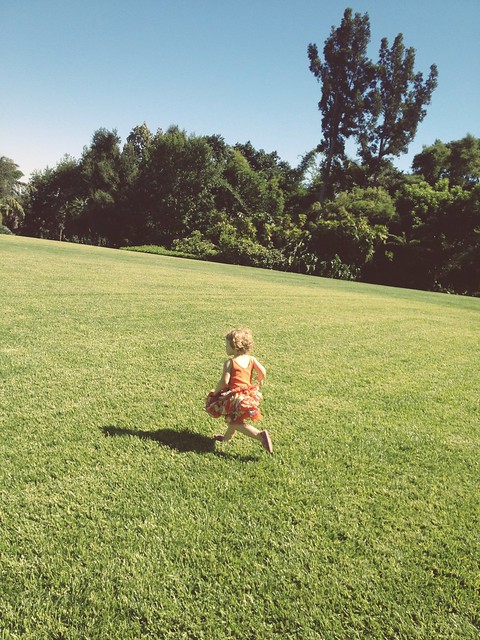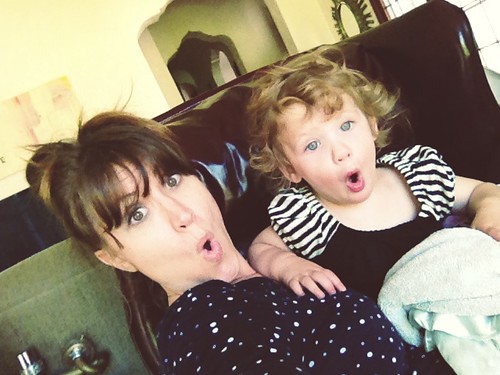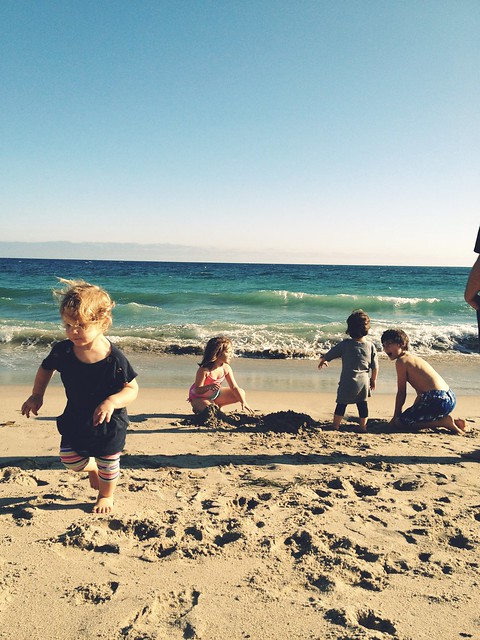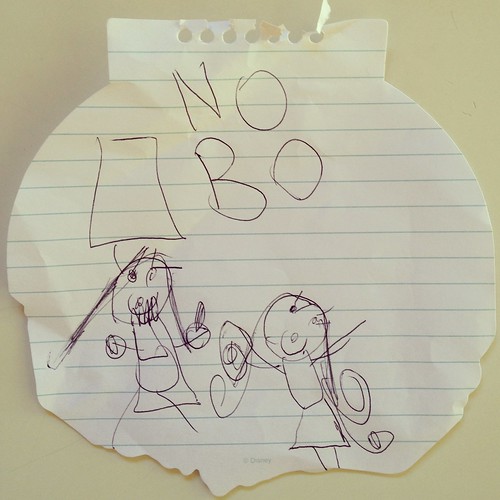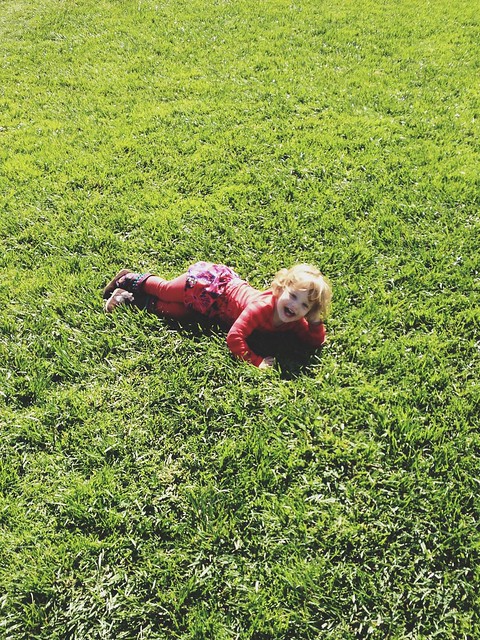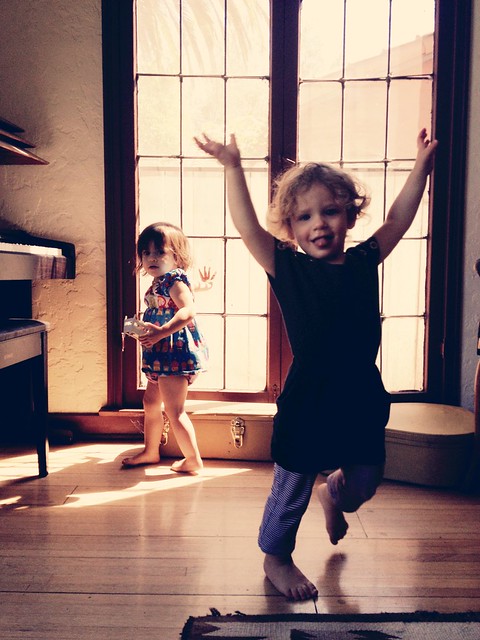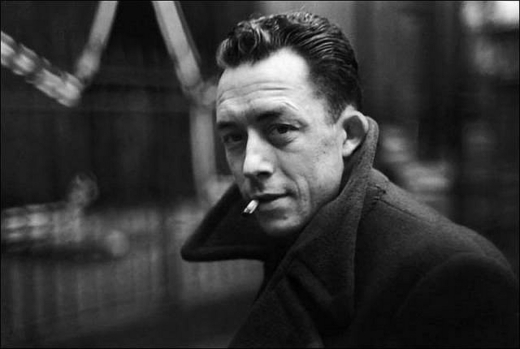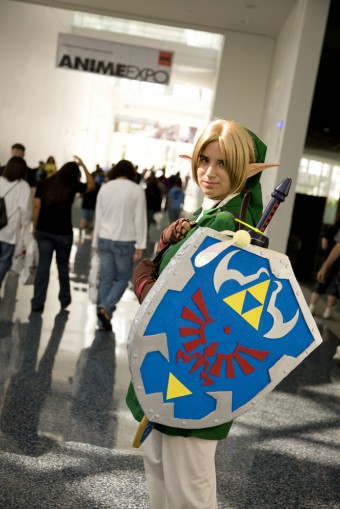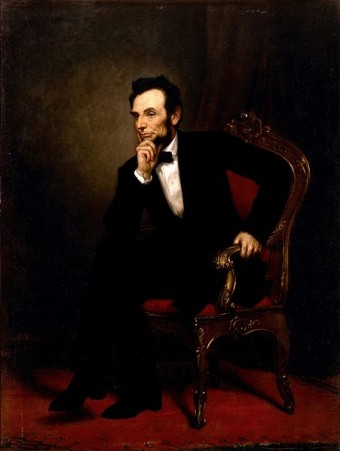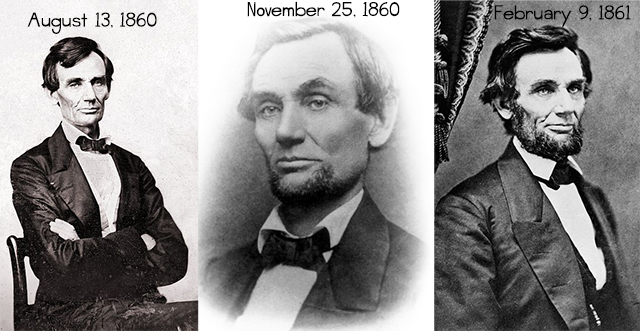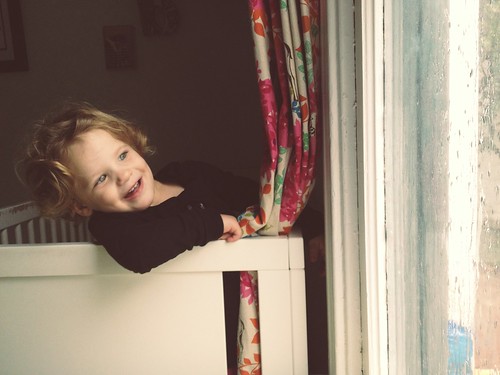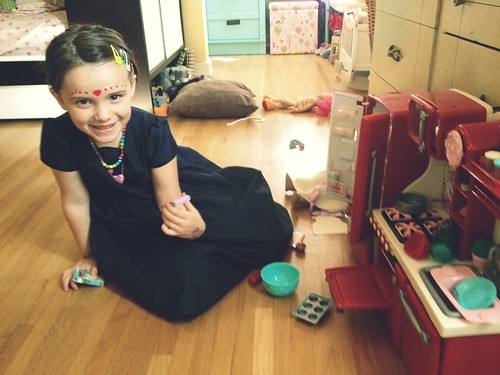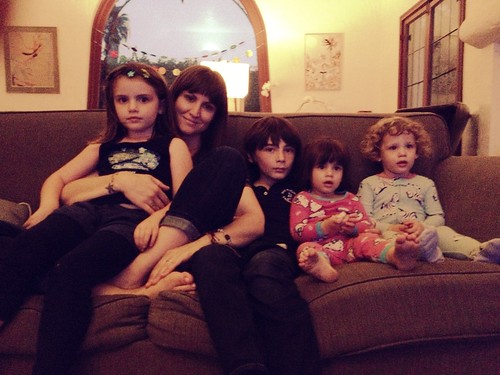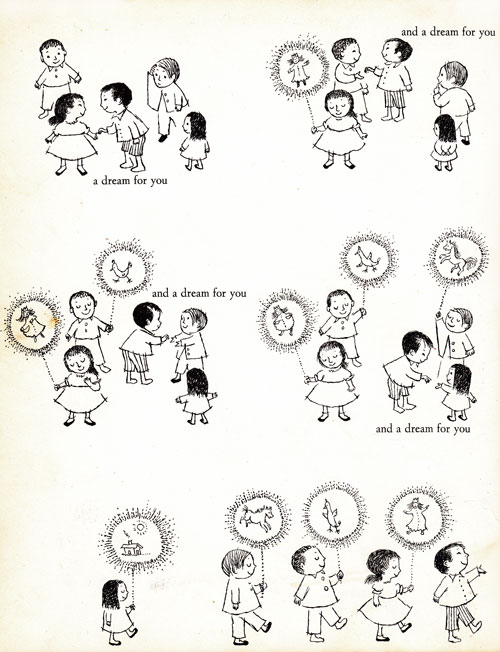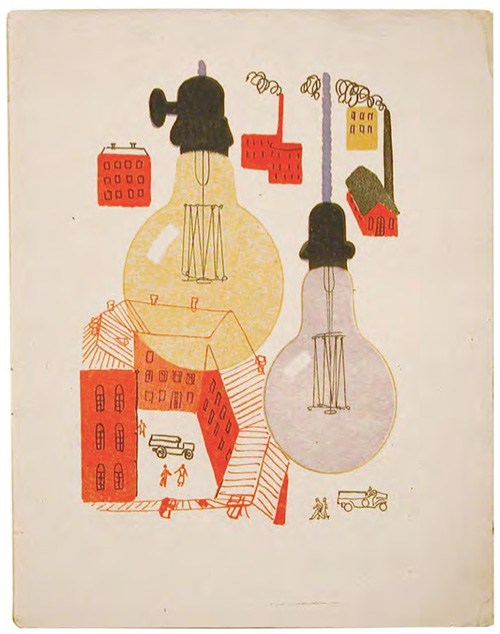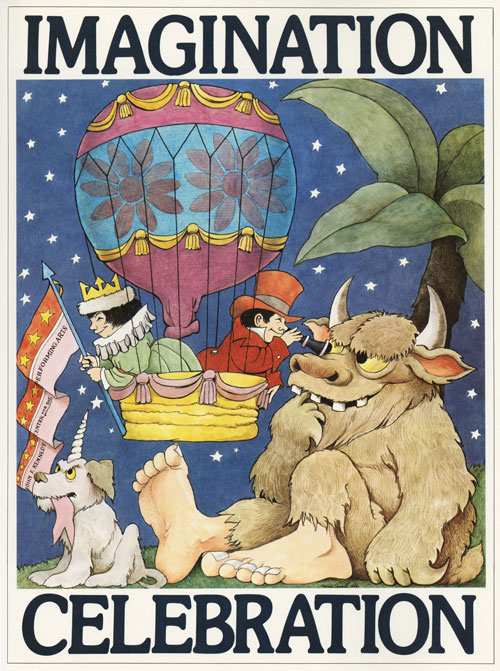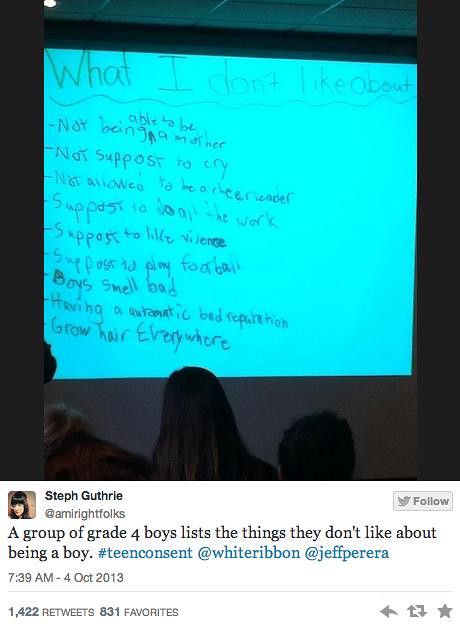Young Mark Twain’s lost gem, the universe in illustrated dioramas, Maurice Sendak’s posthumous love letter to the world, Kafka for kids, and more treats for all ages.
 “It is an error … to think of children as a special kind of creature, almost a different race, rather than as normal, if immature, members of a particular family, and of the human family at large,” J. R. R. Tolkien wrote in his superb meditation on fantasy and why there’s no such thing as writing “for children,” intimating that books able to captivate children’s imagination aren’t “children’s books” but simply really good books. After the year’s best books in psychology and philosophy, art and design, and history and biography, the season’s subjective selection of best-of reading lists continue with the loveliest “children’s” and picture-books of 2013. (Because the best children’s books are, as Tolkien believes, always ones of timeless delight, do catch up on the selections for 2012, 2011, and 2010.)
“It is an error … to think of children as a special kind of creature, almost a different race, rather than as normal, if immature, members of a particular family, and of the human family at large,” J. R. R. Tolkien wrote in his superb meditation on fantasy and why there’s no such thing as writing “for children,” intimating that books able to captivate children’s imagination aren’t “children’s books” but simply really good books. After the year’s best books in psychology and philosophy, art and design, and history and biography, the season’s subjective selection of best-of reading lists continue with the loveliest “children’s” and picture-books of 2013. (Because the best children’s books are, as Tolkien believes, always ones of timeless delight, do catch up on the selections for 2012, 2011, and 2010.)
1. ADVICE TO LITTLE GIRLS
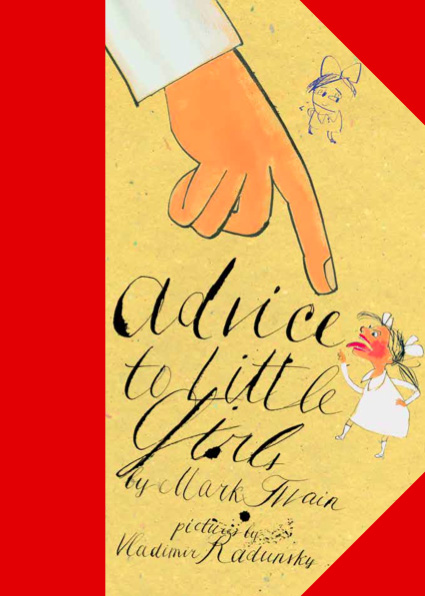 In 1865, when he was only thirty, Mark Twain penned a playful short story mischievously encouraging girls to think independently rather than blindly obey rules and social mores. In the summer of 2011, I chanced upon and fell in love with a lovely Italian edition of this little-known gem with Victorian-scrapbook-inspired artwork by celebrated Russian-born children’s book illustrator Vladimir Radunsky. I knew the book had to come to life in English, so I partnered with the wonderful Claudia Zoe Bedrick of Brooklyn-based indie publishing house Enchanted Lion, maker of extraordinarily beautiful picture-books, and we spent the next two years bringing Advice to Little Girls (public library) to life in America — a true labor-of-love project full of so much delight for readers of all ages. (And how joyous to learn that it was also selected among NPR’s best books of 2013!)
In 1865, when he was only thirty, Mark Twain penned a playful short story mischievously encouraging girls to think independently rather than blindly obey rules and social mores. In the summer of 2011, I chanced upon and fell in love with a lovely Italian edition of this little-known gem with Victorian-scrapbook-inspired artwork by celebrated Russian-born children’s book illustrator Vladimir Radunsky. I knew the book had to come to life in English, so I partnered with the wonderful Claudia Zoe Bedrick of Brooklyn-based indie publishing house Enchanted Lion, maker of extraordinarily beautiful picture-books, and we spent the next two years bringing Advice to Little Girls (public library) to life in America — a true labor-of-love project full of so much delight for readers of all ages. (And how joyous to learn that it was also selected among NPR’s best books of 2013!)
While frolicsome in tone and full of wink, the story is colored with subtle hues of grown-up philosophy on the human condition, exploring all the deft ways in which we creatively rationalize our wrongdoing and reconcile the good and evil we each embody.
Good little girls ought not to make mouths at their teachers for every trifling offense. This retaliation should only be resorted to under peculiarly aggravated circumstances.
If you have nothing but a rag-doll stuffed with sawdust, while one of your more fortunate little playmates has a costly China one, you should treat her with a show of kindness nevertheless. And you ought not to attempt to make a forcible swap with her unless your conscience would justify you in it, and you know you are able to do it.
One can’t help but wonder whether this particular bit may have in part inspired the irreverent 1964 anthology Beastly Boys and Ghastly Girls and its mischievous advice on brother-sister relations:
If at any time you find it necessary to correct your brother, do not correct him with mud — never, on any account, throw mud at him, because it will spoil his clothes. It is better to scald him a little, for then you obtain desirable results. You secure his immediate attention to the lessons you are inculcating, and at the same time your hot water will have a tendency to move impurities from his person, and possibly the skin, in spots.
If your mother tells you to do a thing, it is wrong to reply that you won’t. It is better and more becoming to intimate that you will do as she bids you, and then afterward act quietly in the matter according to the dictates of your best judgment.
Good little girls always show marked deference for the aged. You ought never to ‘sass’ old people unless they ‘sass’ you first.
Originally featured in April — see more spreads, as well as the story behind the project, here.
2. YOU ARE STARDUST
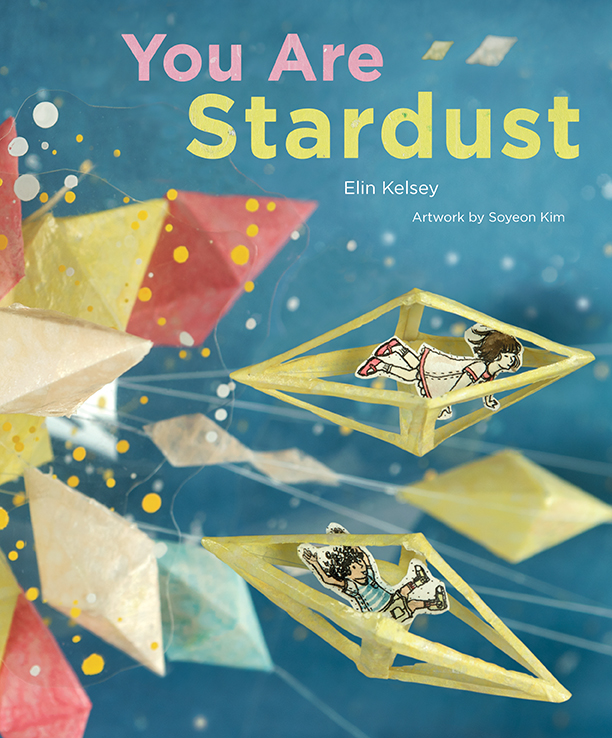 “Everyone you know, everyone you ever heard of, every human being who ever was … lived there — on a mote of dust suspended in a sunbeam,” Carl Sagan famously marveled in his poetic Pale Blue Dot monologue, titled after the iconic 1990 photograph of Earth. The stardust metaphor for our interconnection with the cosmos soon permeated popular culture and became a vehicle for the allure of space exploration. There’s something at once incredibly empowering and incredibly humbling in knowing that the flame in your fireplace came from the sun.
“Everyone you know, everyone you ever heard of, every human being who ever was … lived there — on a mote of dust suspended in a sunbeam,” Carl Sagan famously marveled in his poetic Pale Blue Dot monologue, titled after the iconic 1990 photograph of Earth. The stardust metaphor for our interconnection with the cosmos soon permeated popular culture and became a vehicle for the allure of space exploration. There’s something at once incredibly empowering and incredibly humbling in knowing that the flame in your fireplace came from the sun.
That’s precisely the kind of cosmic awe environmental writer Elin Kelsey and Toronto-based Korean artist Soyeon Kim seek to inspire in kids in You Are Stardust (public library) — an exquisite picture-book that instills that profound sense of connection with the natural world. Underpinning the narrative is a bold sense of optimism — a refreshing antidote to the fear-appeal strategy plaguing most environmental messages today.
Kim’s breathtaking dioramas, to which this screen does absolutely no justice, mix tactile physical materials with fine drawing techniques and digital compositing to illuminate the relentlessly wondrous realities of our intertwined existence: The water in your sink once quenched the thirst of dinosaurs; with every sneeze, wind blasts out of your nose faster than a cheetah’s sprint; the electricity that powers every thought in your brain is stronger than lightning.
But rather than dry science trivia, the message is carried on the wings of poetic admiration for these intricate relationships:
Be still. Listen.
Like you, the Earth breathes.
Your breath is alive with the promise of flowers.
Each time you blow a kiss to the world, you spread pollen that might grow to be a new plant.
The book is nonetheless grounded in real science. Kelsey notes:
I wrote this book as a celebration — one to honor the extraordinary ways in which all of us simply are nature. Every example in this book is backed by current science. Every day, for instance, you breathe in more than a million pollen grains.
But what makes the project particularly exciting is that, in the face of the devastating gender gap in science education, here is a thoughtful, beautiful piece of early science education presented by two women, the most heartening such example since Lauren Redniss’s Radioactive.
A companion iPad app features sound effects, animation, an original score by Paul Aucoin, behind-the-scenes glimpses of Kim’s process in creating her stunning 3D dioramas, and even build-your-own-diorama adventures.
Originally featured in March — see more here.
3. THE HOLE
 The Hole (public library) by artist Øyvind Torseter, one of Norway’s most celebrated illustrators, tells the story of a lovable protagonist who wakes up one day and discovers a mysterious hole in his apartment, which moves and seems to have a mind of its own. Befuddled, he looks for its origin — in vain. He packs it in a box and takes it to a lab, but still no explanation.
The Hole (public library) by artist Øyvind Torseter, one of Norway’s most celebrated illustrators, tells the story of a lovable protagonist who wakes up one day and discovers a mysterious hole in his apartment, which moves and seems to have a mind of its own. Befuddled, he looks for its origin — in vain. He packs it in a box and takes it to a lab, but still no explanation.
With Torseter’s minimalist yet visually eloquent pen-and-digital line drawings, vaguely reminiscent of Sir Quentin Blake and Tomi Ungerer yet decidedly distinctive, the story is at once simple and profound, amusing and philosophical, the sort of quiet meditation that gently, playfully tickles us into existential inquiry.
What makes the book especially magical is that a die-cut hole runs from the wonderfully gritty cardboard cover through every page and all the way out through the back cover — an especial delight for those of us who swoon over masterpieces of die-cut whimsy. In every page, the hole is masterfully incorporated into the visual narrative, adding an element of tactile delight that only an analog book can afford. The screen thus does it little justice, as these digital images feature a mere magenta-rimmed circle where the die-cut hole actually appears, but I’ve tried to capture its charm in a few photographs accompanying the page illustrations.
Originally featured in September, with lots more illustrations.
4. MY BROTHER’S BOOK
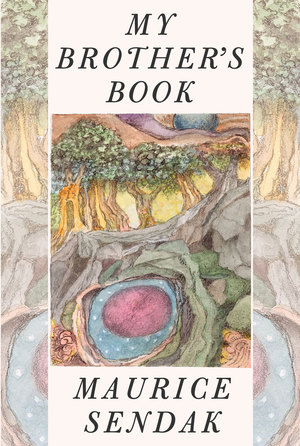 For those of us who loved legendary children’s book author Maurice Sendak — famed creator of wild things, little-known illustrator of velveteen rabbits, infinitely warm heart, infinitely witty mind — his death in 2012 was one of the year’s greatest heartaches. Now, half a century after his iconic Where The Wild Things Are, comes My Brother’s Book (public library; UK) — a bittersweet posthumous farewell to the world, illustrated in vibrant, dreamsome watercolors and written in verse inspired by some of Sendak’s lifelong influences: Shakespeare, Blake, Keats, and the music of Mozart. In fact, a foreword by Shakespeare scholar Stephen Greenblatt reveals the book is based on the Bard’s “A Winter’s Tale.”
For those of us who loved legendary children’s book author Maurice Sendak — famed creator of wild things, little-known illustrator of velveteen rabbits, infinitely warm heart, infinitely witty mind — his death in 2012 was one of the year’s greatest heartaches. Now, half a century after his iconic Where The Wild Things Are, comes My Brother’s Book (public library; UK) — a bittersweet posthumous farewell to the world, illustrated in vibrant, dreamsome watercolors and written in verse inspired by some of Sendak’s lifelong influences: Shakespeare, Blake, Keats, and the music of Mozart. In fact, a foreword by Shakespeare scholar Stephen Greenblatt reveals the book is based on the Bard’s “A Winter’s Tale.”
It tells the story of two brothers, Jack and Guy, torn asunder when a falling star crashes onto Earth. Though on the surface about the beloved author’s own brother Jack, who died 18 years ago, the story is also about the love of Sendak’s life and his partner of fifty years, psychoanalyst Eugene Glynn, whose prolonged illness and eventual loss in 2007 devastated Sendak — the character of Guy reads like a poetic fusion of Sendak and Glynn. And while the story might be a universal “love letter to those who have gone before,” as NPR’s Renee Montagne suggests in Morning Edition, it is in equal measure a private love letter to Glynn. (Sendak passed away the day before President Obama announced his support for same-sex marriage, but Sendak fans were quick to honor both historic moments with a bittersweet homage.)
Indeed, the theme of all-consuming love manifests viscerally in Sendak’s books. Playwright Tony Kushner, a longtime close friend of Sendak’s and one of his most heartfelt mourners, tells NPR:
There’s a lot of consuming and devouring and eating in Maurice’s books. And I think that when people play with kids, there’s a lot of fake ferocity and threats of, you know, devouring — because love is so enormous, the only thing you can think of doing is swallowing the person that you love entirely.
My Brother’s Book ends on a soul-stirring note, tender and poignant in its posthumous light:
And Jack slept safe
Enfolded in his brother’s arms
And Guy whispered ‘Good night
And you will dream of me.’
Originally featured in February.
5. DOES MY GOLDFISH KNOW WHO I AM?
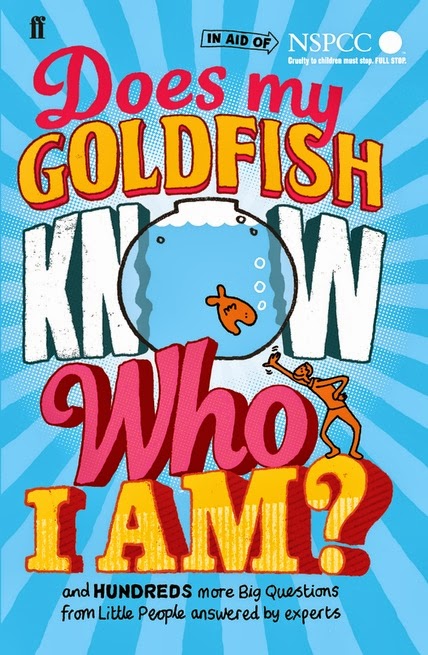 In 2012, I wrote about a lovely book titled Big Questions from Little People & Simple Answers from Great Minds, in which some of today’s greatest scientists, writers, and philosophers answer kids’ most urgent questions, deceptively simple yet profound. It went on to become one of the year’s best books and among readers’ favorites. A few months later, Gemma Elwin Harris, the editor who had envisioned the project, reached out to invite me to participate in the book’s 2013 edition by answering one randomly assigned question from a curious child. Naturally, I was thrilled to do it, and honored to be a part of something as heartening as Does My Goldfish Know Who I Am? (public library) — a compendium of primary school children’s funny, poignant, innocent yet insightful questions about science and how life works, answered by such celebrated minds as rockstar physicist Brian Cox, beloved broadcaster and voice-of-nature Sir David Attenborough, legendary linguist Noam Chomsky, science writer extraordinaire Mary Roach, stat-showman Hans Rosling, Beatle Paul McCartney, biologist and Beagle Project director Karen James, and iconic illustrator Sir Quentin Blake. As was the case with last year’s edition, more than half of the proceeds from the book — which features illustrations by the wonderful Andy Smith — are being donated to a children’s charity.
In 2012, I wrote about a lovely book titled Big Questions from Little People & Simple Answers from Great Minds, in which some of today’s greatest scientists, writers, and philosophers answer kids’ most urgent questions, deceptively simple yet profound. It went on to become one of the year’s best books and among readers’ favorites. A few months later, Gemma Elwin Harris, the editor who had envisioned the project, reached out to invite me to participate in the book’s 2013 edition by answering one randomly assigned question from a curious child. Naturally, I was thrilled to do it, and honored to be a part of something as heartening as Does My Goldfish Know Who I Am? (public library) — a compendium of primary school children’s funny, poignant, innocent yet insightful questions about science and how life works, answered by such celebrated minds as rockstar physicist Brian Cox, beloved broadcaster and voice-of-nature Sir David Attenborough, legendary linguist Noam Chomsky, science writer extraordinaire Mary Roach, stat-showman Hans Rosling, Beatle Paul McCartney, biologist and Beagle Project director Karen James, and iconic illustrator Sir Quentin Blake. As was the case with last year’s edition, more than half of the proceeds from the book — which features illustrations by the wonderful Andy Smith — are being donated to a children’s charity.
The questions range from what the purpose of science is to why onions make us cry to whether spiders can speak to why we blink when we sneeze. Psychologist and broadcaster Claudia Hammond, who recently explained the fascinating science of why time slows down when we’re afraid, speeds up as we age, and gets all warped while we’re on vacation in one of the best psychology and philosophy books of 2013, answers the most frequently asked question by the surveyed children: Why do we cry?
It’s normal to cry when you feel upset and until the age of twelve boys cry just as often as girls. But when you think about it, it is a bit strange that salty water spills out from the corners of your eyes just because you feel sad.
One professor noticed people often say that, despite their blotchy faces, a good cry makes them feel better. So he did an experiment where people had to breathe in over a blender full of onions that had just been chopped up. Not surprisingly this made their eyes water. He collected the tears and put them in the freezer. Then he got people to sit in front of a very sad film wearing special goggles which had tiny buckets hanging off the bottom, ready to catch their tears if they cried. The people cried, but the buckets didn’t work and in the end he gathered their tears in tiny test tubes instead.
He found that the tears people cried when they were upset contained extra substances, which weren’t in the tears caused by the onions. So he thinks maybe we feel better because we get rid of these substances by crying and that this is the purpose of tears.
But not everyone agrees. Many psychologists think that the reason we cry is to let other people know that we need their sympathy or help. So crying, provided we really mean it, brings comfort because people are nice to us.
Crying when we’re happy is a bit more of a mystery, but strong emotions have a lot in common, whether happy or sad, so they seem to trigger some of the same processes in the body.
(For a deeper dive into the biological mystery of crying, see the science of sobbing and emotional tearing.)
Joshua Foer, who knows a thing or two about superhuman memory and the limits of our mind, explains to 9-year-old Tom how the brain can store so much information despite being that small:
An adult’s brain only weighs about 1.4 kilograms, but it’s made up of about 100 billion microscopic neurons. Each of those neurons looks like a tiny branching tree, whose limbs reach out and touch other neurons. In fact, each neuron can make between 5,000 and 10,000 connections with other neurons — sometimes even more. That’s more than 500 trillion connections! A memory is essentially a pattern of connections between neurons.
Every sensation that you remember, every thought that you think, transforms your brain by altering the connections within that vast network. By the time you get to the end of this sentence, you will have created a new memory, which means your brain will have physically changed.
Neuroscientist Tali Sharot, who has previously studied why our brains are wired for optimism, answers 8-year-old Maia’s question about why we don’t have memories from the time we were babies and toddlers:
We use our brain for memory. In the first few years of our lives, our brain grows and changes a lot, just like the rest of our body. Scientists think that because the parts of our brain that are important for memory have not fully developed when we are babies, we are unable to store memories in the same way that we do when we are older.
Also, when we are very young we do not know how to speak. This makes it difficult to keep events in your mind and remember them later, because we use language to remember what happened in the past.
In answering 8-year-old Hannah’s question about what newspapers do when there is no news, writer and journalist Oliver Burkeman, author of the excellent The Antidote: Happiness for People Who Can’t Stand Positive Thinking, offers a primer on media literacy — an important caveat on news that even we, as alleged grown-ups, frequently forget:
Newspapers don’t really go out and find the news: they decide what gets to count as news. The same goes for television and radio. And you might disagree with their decisions! (For example, journalists are often accused of focusing on bad news and ignoring the good, making the world seem worse than it is.)
The important thing to remember, whenever you’re reading or watching the news, is that someone decided to tell you those things, while leaving out other things. They’re presenting one particular view of the world — not the only one. There’s always another side to the story.
And my answer, to 9-year-old Ottilie’s question about why we have books:
Some people might tell you that books are no longer necessary now that we have the internet. Don’t believe them. Books help us know other people, know how the world works, and, in the process, know ourselves more deeply in a way that has nothing to with what you read them on and everything to do with the curiosity, integrity and creative restlessness you bring to them.
Books build bridges to the lives of others, both the characters in them and your countless fellow readers across other lands and other eras, and in doing so elevate you and anchor you more solidly into your own life. They give you a telescope into the minds of others, through which you begin to see with ever greater clarity the starscape of your own mind.
And though the body and form of the book will continue to evolve, its heart and soul never will. Though the telescope might change, the cosmic truths it invites you to peer into remain eternal like the Universe.
In many ways, books are the original internet — each fact, each story, each new bit of information can be a hyperlink to another book, another idea, another gateway into the endlessly whimsical rabbit hole of the written word. Just like the web pages you visit most regularly, your physical bookmarks take you back to those book pages you want to return to again and again, to reabsorb and relive, finding new meaning on each visit — because the landscape of your life is different, new, “reloaded” by the very act of living.
Originally featured in November — read more here.
6. LITTLE BOY BROWN
 “I didn’t feel alone in the Lonely Crowd,” young Italo Calvino wrote of his visit to America, and it is frequently argued that hardly any place embodies the “Lonely Crowd” better than New York, city of “avoid-eye-contact indifference of the crowded subways.” That, perhaps, is what children’s book writer Isobel Harris set out to both affirm and decondition in Little Boy Brown (public library) — a magnificent ode to childhood and loneliness, easily the greatest ode to childhood and loneliness ever written, illustrated by the famed Hungarian-born French cartoonist and graphic designer André François. Originally published in 1949, this timeless story that stirred the hearts of generations has been newly resurrected by Enchanted Lion.
“I didn’t feel alone in the Lonely Crowd,” young Italo Calvino wrote of his visit to America, and it is frequently argued that hardly any place embodies the “Lonely Crowd” better than New York, city of “avoid-eye-contact indifference of the crowded subways.” That, perhaps, is what children’s book writer Isobel Harris set out to both affirm and decondition in Little Boy Brown (public library) — a magnificent ode to childhood and loneliness, easily the greatest ode to childhood and loneliness ever written, illustrated by the famed Hungarian-born French cartoonist and graphic designer André François. Originally published in 1949, this timeless story that stirred the hearts of generations has been newly resurrected by Enchanted Lion.
This is the story of a four-year-old boy living with his well-to-do mother and father in a Manhattan hotel, in which the elevator connects straight to the subway tunnel below the building and plugs right into the heart of the city. And yet Little Boy Brown, whose sole friends are the doormen and elevator operators, feels woefully lonely — until, one day, his hotel chambermaid Hilda invites him to visit her house outside the city, where he blossoms into a new sense of belonging.
Underpinning the charming tale of innocence and children’s inborn benevolence is a heartwarming message about connection across the lines of social class and bridging the gaps of privilege with simple human kindness.
Hilda’s mother kissed me before she even knew who I was!
[…]
Hilda’s family is smarter than we are. They can all speak two different languages, and they can close their eyes and think about two different countries. They’ve been on the Ocean, and they’ve climbed high mountains. They haven’t got quite enough of anything. It makes it exciting when a little more comes!
The story itself, at once a romantic time-capsule of a bygone New York and a timeless meditation on what it’s like feel so lonesome in a crowd of millions, invites us to explore the tender intersection of loneliness and loveliness. François, who studied with Picasso, illustrated a number of iconic New Yorker covers, and belongs to the same coterie of influential mid-century creative legends as Sir Quentin Blake, Tomi Ungerer, and his close friend and collaborator of Ronald Searle, brings all this wonderful dimensionality to life in his singular illustrations, all the more special given that this was his first children’s book.
Originally featured in November — see more here.
7. THE MIGHTY LALOUCHE
 The more you win, the more you win, the science of the “winner effect” tells us. The same interplay of biochemistry, psychology and performance thus also holds true of the opposite — but perhaps this is why we love a good underdog story, those unlikely tales of assumed “losers” beating the odds to triumph as “winners.” Stories like this are fundamental to our cultural mythology of ambition and anything-is-possible aspiration, and they speak most powerfully to our young and hopeful selves, to our inner underdogs, to the child who dreams of defeating her bully in blazing glory.
The more you win, the more you win, the science of the “winner effect” tells us. The same interplay of biochemistry, psychology and performance thus also holds true of the opposite — but perhaps this is why we love a good underdog story, those unlikely tales of assumed “losers” beating the odds to triumph as “winners.” Stories like this are fundamental to our cultural mythology of ambition and anything-is-possible aspiration, and they speak most powerfully to our young and hopeful selves, to our inner underdogs, to the child who dreams of defeating her bully in blazing glory.
That ever-alluring parable is at the heart of The Mighty Lalouche (public library), written by Matthew Olshan, who famously reimagined Twain’s Huckleberry Finn with an all-girl cast of characters, and illustrated by the inimitable Sophie Blackall, one of the most extraordinary book artists working today, who has previously given us such gems as her drawings of Craigslist missed connections and Aldous Huxley’s only children’s book. It tells the heartening story of a humble and lithe early-twentieth-century French postman named Lalouche, his profound affection for his pet finch Geneviève, and his surprising success in the era’s favorite sport of la boxe française, or French boxing.
One day, at the height of Parisians’ infatuation with the novelty of electric cars, Lalouche’s boss at the post office informs him that a new electric autocar is replacing all walking postmen, who are too slow by comparison. Desperate to provide for himself and Geneviève, Lalouche sees a flyer offering cash to any sparring partners willing to fight the champions at the Bastille Boxing Club. Though Lalouche is small and “rather bony,” his hands are nimble and strong from handling weighty packages, and his feet are fast from racing up apartment stairs in his deliveries — so he signs up.
One should never underestimate a man who loves his finch.
Thanks to his agility and love for the birdie, to everyone’s astonishment, he goes on to defeat each of the champions in turn — even the formidable Anaconda, “the biggest, baddest beast the city has ever seen,” infamous for his deadly sleeper hold. But when the postal service chief realizes the autocar is just a gimmick good for nothing and asks whether Lalouche is willing to take his job back, the tiny champ gladly agrees, for his heart is in the joy he brings people as their mail arrives.
Underpinning the simple allegory of unlikely triumph is a deeper reflection on our present-day anxieties about whether or not machines — gadgets, robots, algorithms — will replace us. The story gently assuring us that the most quintessential of human qualities and capacities — courage, integrity, love — will always remain ours and ours alone.
But what makes the book particularly exceptional are the curious archival images uncovered in the research, presented here exclusively alongside the soulful and expressive illustrations Blackall reincarnated them into:
Originally featured n May — see more here.
8. GOBBLE YOU UP
 For nearly two decades, independent India-based publisher Tara Books has been giving voice to marginalized art and literature through a collective of artists, writers, and designers collaborating on beautiful books based on regional folk traditions, producing such gems as Waterlife, The Night Life of Trees, and Drawing from the City. A year after I Saw a Peacock with a Fiery Tail — one of the best art books of 2012, a magnificent 17th-century British “trick” poem adapted in a die-cut narrative and illustrated in the signature Indian folk art style of the Gond tribe — comes Gobble You Up (public library), an oral Rajasthani trickster tale adapted as a cumulative rhyme in a mesmerizing handmade treasure released in a limited edition of 7,000 numbered handmade copies, illustrated by artist Sunita and silkscreened by hand in two colors on beautifully coarse kraft paper custom-made for the project. What makes it especially extraordinary, however, is that the Mandna tradition of tribal finger-painting — an ancient Indian art form practiced only by women and passed down from mother to daughter across the generations, created by soaking pieces of cloth in chalk and lime paste, which the artist squeezes through her fingers into delicate lines on the mud walls of village huts — has never before been used to tell a children’s story.
For nearly two decades, independent India-based publisher Tara Books has been giving voice to marginalized art and literature through a collective of artists, writers, and designers collaborating on beautiful books based on regional folk traditions, producing such gems as Waterlife, The Night Life of Trees, and Drawing from the City. A year after I Saw a Peacock with a Fiery Tail — one of the best art books of 2012, a magnificent 17th-century British “trick” poem adapted in a die-cut narrative and illustrated in the signature Indian folk art style of the Gond tribe — comes Gobble You Up (public library), an oral Rajasthani trickster tale adapted as a cumulative rhyme in a mesmerizing handmade treasure released in a limited edition of 7,000 numbered handmade copies, illustrated by artist Sunita and silkscreened by hand in two colors on beautifully coarse kraft paper custom-made for the project. What makes it especially extraordinary, however, is that the Mandna tradition of tribal finger-painting — an ancient Indian art form practiced only by women and passed down from mother to daughter across the generations, created by soaking pieces of cloth in chalk and lime paste, which the artist squeezes through her fingers into delicate lines on the mud walls of village huts — has never before been used to tell a children’s story.
And what a story it is: A cunning jackal who decides to spare himself the effort of hunting for food by tricking his fellow forest creatures into being gobbled up whole, beginning with his friend the crane; he slyly swallows them one by one, until the whole menagerie fills his belly — a play on the classic Meena motif of the pregnant animal depicted with a baby inside its belly, reflecting the mother-daughter genesis of the ancient art tradition itself.
Indeed, Sunita herself was taught to paint by her mother and older sister — but unlike most Meena women, who don’t usually leave the confines of their village and thus contain their art within their community, Sunita has thankfully ventured into the wider world, offering us a portal into this age-old wonderland of art and storytelling.
Gita Wolf, Tara’s visionary founder, who envisioned the project and wrote the cumulative rhyme, describes the challenges of adapting this ephemeral, living art form onto the printed page without losing any of its expressive aliveness:
Illustrating the story in the Meena style of art involved two kinds of movement. The first was to build a visual narrative sequencing from a tradition which favored single, static images. The second challenge was to keep the quality of the wall art, while transferring it to a different, while also smaller, surface. We decided on using large sheets of brown paper, with Sunita squeezing diluted white acrylic paint through her fingers.
Originally featured in October — see more here.
9. BALLAD
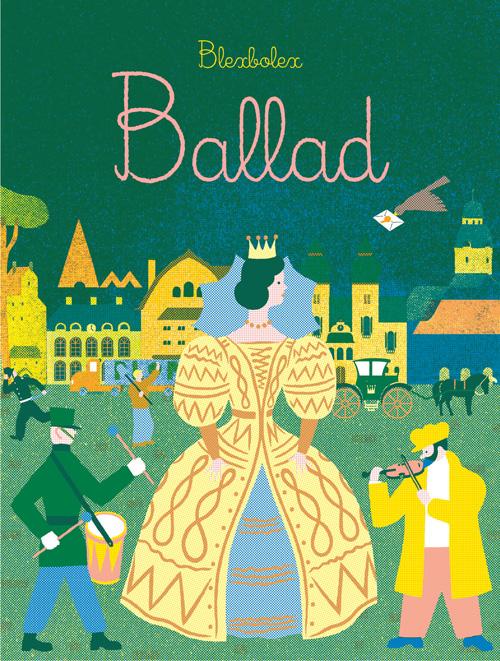 The best, most enchanting stories live somewhere between the creative nourishment of our daydreams and the dark allure of our nightmares. That’s exactly where beloved French graphic artist Blexbolex transports us in Ballad (public library) — his exquisite and enthralling follow-up to People, one of the best illustrated books of 2011, and Seasons.
The best, most enchanting stories live somewhere between the creative nourishment of our daydreams and the dark allure of our nightmares. That’s exactly where beloved French graphic artist Blexbolex transports us in Ballad (public library) — his exquisite and enthralling follow-up to People, one of the best illustrated books of 2011, and Seasons.
This continuously evolving story traces a child’s perception of his surroundings as he walks home from school. It unfolds over seven sequences across 280 glorious pages and has an almost mathematical beauty to it as each sequence exponentially blossoms into the next: We begin with school, path, and home; we progress to school, street, path, forest, home; before we know it, there’s a witch, a stranger, a sorcerer, a hot air balloon, and a kidnapped queen. All throughout, we’re invited to reimagine the narrative as we absorb the growing complexity of the world — a beautiful allegory for our walk through life itself.
The frontispiece makes a simple and alluring promise:
It’s a story as old as the world — a story that begins all over again each day.
The dark whimsy of Blexbolex’s unusual visual storytelling sings to us a ballad of danger and delight, serenading with the enchantment of fairy tales, the starkness of graphic novels, and the liberation of choose-your-own-adventure stories. And this is precisely where Blexbolex’s singular talent springs to life: Trained as a painter in the 1980s but having left art school to find himself as a silk-screen artist, he blends the charisma of vintage graphic design and traditional printing techniques with the dynamic mesmerism of contemporary graphic novels and experimental narratives to create an entirely new, wholly different form of bewitching visual storytelling, where a few carefully chosen words invite perpetual reinterpretation of layered and expressive scenes.
Originally featured in October — see more here.
10. THE DARK
 Daniel Handler — beloved author, timelessly heartening literary jukeboxer — is perhaps better-known by his pen name Lemony Snicket, under which he pens his endlessly delightful children’s books. In fact, they owe much of their charisma to the remarkable creative collaborations Snicket spawns, from 13 Words illustrated by the inimitable Maira Kalman to Who Could It Be At This Hour? with artwork by celebrated cartoonist Seth. Snicket’s 2013 gem, reminiscent in spirit of Maya Angelou’s Life Doesn’t Frighten Me, is at least as exciting — a minimalist yet magnificently expressive story about a universal childhood fear, titled The Dark (public library) and illustrated by none other than Jon Klassen.
Daniel Handler — beloved author, timelessly heartening literary jukeboxer — is perhaps better-known by his pen name Lemony Snicket, under which he pens his endlessly delightful children’s books. In fact, they owe much of their charisma to the remarkable creative collaborations Snicket spawns, from 13 Words illustrated by the inimitable Maira Kalman to Who Could It Be At This Hour? with artwork by celebrated cartoonist Seth. Snicket’s 2013 gem, reminiscent in spirit of Maya Angelou’s Life Doesn’t Frighten Me, is at least as exciting — a minimalist yet magnificently expressive story about a universal childhood fear, titled The Dark (public library) and illustrated by none other than Jon Klassen.
In a conversation with NPR, Handler echoes Aung San Suu Kyi’s timeless wisdom on freedom from fear and articulates the deeper, more universal essence of the book’s message:
I think books that are meant to be read in the nighttime ought to confront the very fears that we’re trying to think about. And I think that a young reader of The Dark will encounter a story about a boy who makes new peace with a fear, rather than a story that ignores whatever troubles are lurking in the corners of our minds when we go to sleep.
Originally featured in June.
11. JANE, THE FOX AND ME
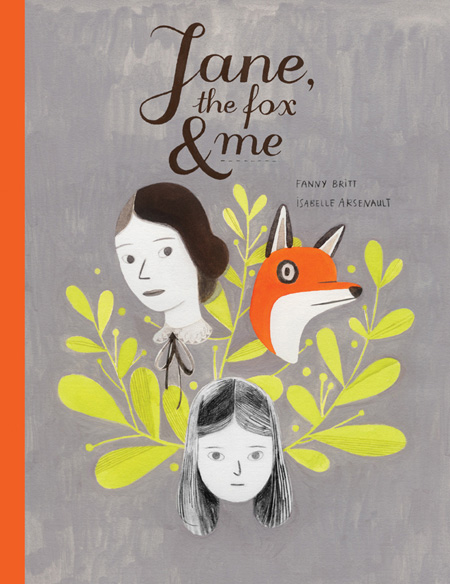 “Reading is escape, and the opposite of escape; it’s a way to make contact with reality,” Nora Ephron wrote. “If I can’t stand the world I just curl up with a book, and it’s like a little spaceship that takes me away from everything,” Susan Sontag told an interviewer, articulating an experience at once so common and so deeply personal to all of us who have ever taken refuge from the world in the pages of a book and the words of a beloved author. It’s precisely this experience that comes vibrantly alive in Jane, the Fox, and Me (public library) — a stunningly illustrated graphic novel about a young girl named Hélène, who, cruelly teased by the “mean girls” clique at school, finds refuge in Charlotte Brönte’s Jane Eyre. In Jane, she sees both a kindred spirit and aspirational substance of character, one straddling the boundary between vulnerability and strength with remarkable grace — just the quality of heart and mind she needs as she confronts the common and heartbreaking trials of teenage girls tormented by bullying, by concerns over their emerging womanly shape, and by the soul-shattering feeling of longing for acceptance yet receiving none.
“Reading is escape, and the opposite of escape; it’s a way to make contact with reality,” Nora Ephron wrote. “If I can’t stand the world I just curl up with a book, and it’s like a little spaceship that takes me away from everything,” Susan Sontag told an interviewer, articulating an experience at once so common and so deeply personal to all of us who have ever taken refuge from the world in the pages of a book and the words of a beloved author. It’s precisely this experience that comes vibrantly alive in Jane, the Fox, and Me (public library) — a stunningly illustrated graphic novel about a young girl named Hélène, who, cruelly teased by the “mean girls” clique at school, finds refuge in Charlotte Brönte’s Jane Eyre. In Jane, she sees both a kindred spirit and aspirational substance of character, one straddling the boundary between vulnerability and strength with remarkable grace — just the quality of heart and mind she needs as she confronts the common and heartbreaking trials of teenage girls tormented by bullying, by concerns over their emerging womanly shape, and by the soul-shattering feeling of longing for acceptance yet receiving none.
Written by Fanny Britt and illustrated by Isabelle Arsenault — the artist behind the magnificent Virginia Wolf, one of the best children’s books of 2012 — this masterpiece of storytelling is as emotionally honest and psychologically insightful as it is graphically stunning. What makes the visual narrative especially enchanting is that Hélène’s black-and-white world of daily sorrow springs to life in full color whenever she escapes with Brönte.
Originally featured in November — see more here.
12. MY FIRST KAFKA
 Sylvia Plath believed it was never too early to dip children’s toes in the vast body of literature. But to plunge straight into Kafka? Why not, which is precisely what Brooklyn-based writer and videogame designer Matthue Roth has done in My First Kafka: Runaways, Rodents, and Giant Bugs (public library) — a magnificent adaptation of Kafka for kids. With stunning black-and-white illustrations by London-based fine artist Rohan Daniel Eason, this gem falls — rises, rather — somewhere between Edward Gorey, Maurice Sendak, and the Graphic Canon series.
Sylvia Plath believed it was never too early to dip children’s toes in the vast body of literature. But to plunge straight into Kafka? Why not, which is precisely what Brooklyn-based writer and videogame designer Matthue Roth has done in My First Kafka: Runaways, Rodents, and Giant Bugs (public library) — a magnificent adaptation of Kafka for kids. With stunning black-and-white illustrations by London-based fine artist Rohan Daniel Eason, this gem falls — rises, rather — somewhere between Edward Gorey, Maurice Sendak, and the Graphic Canon series.
The idea came to Roth after he accidentally started reading Kafka to his two little girls, who grew enchanted with the stories. As for the choice to adapt Kafka’s characteristically dark sensibility for children, Roth clearly subscribes to the Sendakian belief that grown-ups project their own fears onto kids, who welcome rather than dread the dark. Indeed, it’s hard not to see Sendak’s fatherly echo in Eason’s beautifully haunting black-and-white drawings.
Much like Jonathan Safran Foer used Street of Crocodiles to create his brilliant Tree of Codes literary remix and Darwin’s great-granddaughter adapted the legendary naturalist’s biography into verse, Roth scoured public domain texts and various translations of Kafka to find the perfect works for his singsong transformations: the short prose poem “Excursion into the Mountains,” the novella “The Metamorphosis,” which endures as Kafka’s best-known masterpiece, and “Josefine the Singer,” his final story.
“I don’t know!”
I cried without being heard.“I do not know.”
If nobody comes,
then nobody comes.I’ve done nobody any harm.
Nobody’s done me any harm.
But nobody will help me.A pack of nobodies
would be rather fine,
on the other hand.I’d love to go on a trip — why not? –
with a pack of nobodies.Into the mountains, of course.
Where else?
In a way, the book — like most of Kafka’s writing — also bears the odd mesmerism of literary history’s letters and diaries, the semi-forbidden pleasure of which swells under the awareness that their writers never meant for us to read the very words we’re reading, never sought to invite us into their private worlds. Kafka wished for his entire world to remain private — he never finished any of his novels and burned the majority of his manuscripts; the rest he left with his closest friend and literary executor, Max Brod, whom he instructed to burn the remaining diaries, sketches, manuscripts, and letters. It was out of love that Brod chose not to, possibly displeasing his friend but eternally pleasing the literary public.
Originally featured in July — see more here.
13. MY FATHER’S ARMS ARE A BOAT
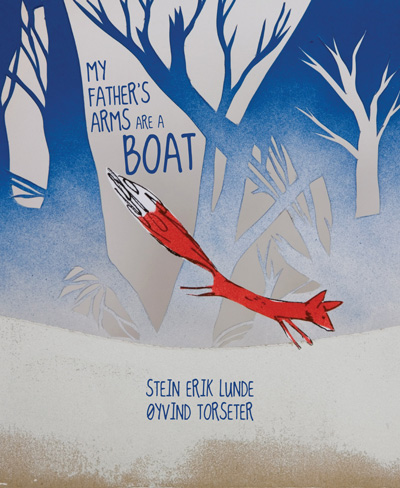 The finest children’s books have a way of exploring complex, universal themes through elegant simplicity and breathless beauty. From my friends at Enchanted Lion, collaborators on Mark Twain’s Advice to Little Girls and makers of some of the most extraordinary picture-books you’ll ever encounter, comes My Father’s Arms Are a Boat (public library) by writer Stein Erik Lunde and illustrator Øyvind Torseter. This tender and heartening Norwegian gem tells the story of an anxious young boy who climbs into his father’s arms seeking comfort on a cold sleepless night. The two step outside into the winter wonderland as the boy asks questions about the red birds in the spruce tree to be cut down the next morning, about the fox out hunting, about why his mother will never wake up again. With his warm and assuring answers, the father watches his son make sense of this strange world of ours where love and loss go hand in hand.
The finest children’s books have a way of exploring complex, universal themes through elegant simplicity and breathless beauty. From my friends at Enchanted Lion, collaborators on Mark Twain’s Advice to Little Girls and makers of some of the most extraordinary picture-books you’ll ever encounter, comes My Father’s Arms Are a Boat (public library) by writer Stein Erik Lunde and illustrator Øyvind Torseter. This tender and heartening Norwegian gem tells the story of an anxious young boy who climbs into his father’s arms seeking comfort on a cold sleepless night. The two step outside into the winter wonderland as the boy asks questions about the red birds in the spruce tree to be cut down the next morning, about the fox out hunting, about why his mother will never wake up again. With his warm and assuring answers, the father watches his son make sense of this strange world of ours where love and loss go hand in hand.
Lunde, who also writes lyrics and has translated Bob Dylan into Norwegian, is a masterful storyteller who unfolds incredible richness in few words. Meanwhile, Torseter’s exquisite 2D/3D style combining illustration and paper sculpture, reminiscent of Soyeon Kim’s wonderful You Are Stardust, envelops the story in a sheath of delicate whimsy.
Above all, My Father’s Arms Are a Boat is about the quiet way in which boundless love and unconditional assurance can lift even the most pensive of spirits from the sinkhole of existential anxiety.
Originally featured in April.
HONORABLE MENTIONS
Go: A Kidd’s Guide to Graphic Design by legendary graphic designer Chip Kidd, Night Light by New York Times art director and illustrator Nicholas Blechman, and Mr. Tiger Goes Wild by Caldecott Honor artist Peter Brown.
Donating = Loving
Bringing you (ad-free) Brain Pickings takes hundreds of hours each month. If you find any joy and stimulation here, please consider becoming a Supporting Member with a recurring monthly donation of your choosing, between a cup of tea and a good dinner:
| ♥ $7 / month♥ $3 / month♥ $10 / month♥ $25 / month |
![]()
You can also become a one-time patron with a single donation in any amount:
 Brain Pickings has a free weekly newsletter. It comes out on Sundays and offers the week’s best articles. Here’s what to expect. Like? Sign up.
Brain Pickings has a free weekly newsletter. It comes out on Sundays and offers the week’s best articles. Here’s what to expect. Like? Sign up.
Brain Pickings takes 450+ hours a month to curate and edit across the different platforms, and remains banner-free. If it brings you any joy and inspiration, please consider a modest donation – it lets me know I'm doing something right.

